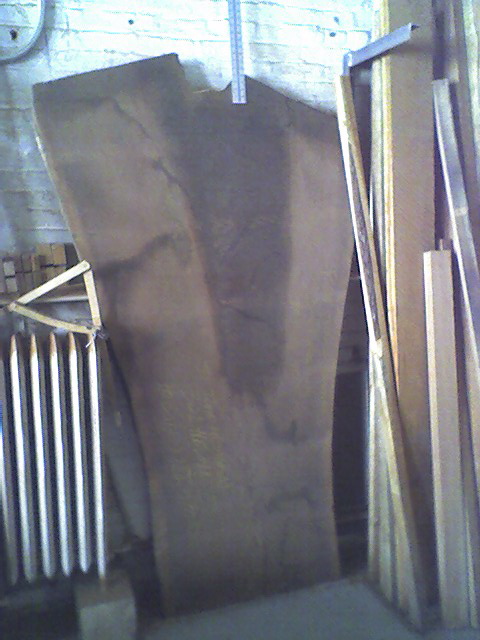Schwarz
View current page
...more recent posts
As the winds and water of Hurricane Katrina were receding, presidential confidante Karen Hughes sent a cable from her State Department office to U.S. ambassadors worldwide.
Titled "Echo-Chamber Message" -- a public relations term for talking points designed to be repeated again and again -- the Sept. 7, 2005, directive was unmistakable: Assure the scores of countries that had pledged or donated aid at the height of the disaster that their largesse had provided Americans "practical help and moral support" and "highlight the concrete benefits hurricane victims are receiving."
Many of the U.S. diplomats who received the message, however, were beginning to witness a more embarrassing reality. They knew the U.S. government was turning down many allies' offers of manpower, supplies and expertise worth untold millions of dollars. Eventually the United States also would fail to collect most of the unprecedented outpouring of international cash assistance for Katrina's victims.
Allies offered $854 million in cash and in oil that was to be sold for cash. But only $40 million has been used so far for disaster victims or reconstruction, according to U.S. officials and contractors. Most of the aid went uncollected, including $400 million worth of oil. Some offers were withdrawn or redirected to private groups such as the Red Cross. The rest has been delayed by red tape and bureaucratic limits on how it can be spent.
In addition, valuable supplies and services -- such as cellphone systems, medicine and cruise ships -- were delayed or declined because the government could not handle them. In some cases, supplies were wasted.
The struggle to apply foreign aid in the aftermath of the hurricane, which has cost U.S. taxpayers more than $125 billion so far, is another reminder of the federal government's difficulty leading the recovery. Reports of government waste and delays or denials of assistance have surfaced repeatedly since hurricanes Katrina and Rita struck in 2005.

tapered dowel legs
Plays about architects don’t have much of track record in New York, at least not since Ibsen’s “The Master Builder.” In January, th Times dismissed a new play about Frank Lloyd Wright as a “dreary drama” that focussed too much on Wright’s tirades against contractors, a subject that, however easy it may be for people to identify with, doesn’t make for stirring theatre. But things might turn out differently for “The Glass House,” a new play that explores the story of Mies van der Rohe’s Farnsworth House, which was completed in 1951, outside Chicago, if only because it is a play about architecture only in the sense that “A Streetcar Named Desire” is a play about public transit. “The Glass House” explores the romantic relationship between a female client and a male architect that merely happens to have, at its center, one of the most famous houses in history. The tensions between Dr. Edith Farnsworth, who dreamed of commissioning a great work of architecture, and Mies van der Rohe, who seduced her into letting him build the house he wanted, represent the stresses of almost every client-architect relationship. “It is the story of people who were together for five years and built this wonderful house, and then they sued each other,” June Finfer, the playwright, said the other day.
Gov. Eliot Spitzer’s appointment last week of two top officials to a development corporation that had been considered all but dead appears to set the stage for yet another power struggle at ground zero.
In a way it also seems to be a rebuke for the city’s recent solo announcement that the Joyce Theater would be the sole occupant of a performing arts center planned for the former World Trade Center site. Many of those involved in planning Lower Manhattan now wonder whether the center, to be designed by Frank Gehry, will become the focus of a long tug of war.
The revival of the Lower Manhattan Development Corporation is perhaps the clearest sign that the Spitzer administration is determined to take back the reins, or at least strengthen its grip, on the center. Having chosen a master plan and a memorial design and allocated federal money for cultural programs, the development corporation said last summer that its work was done. The agency had already been defanged by George E. Pataki, then the governor; he had bowed to criticism from relatives of 9/11 victims and eliminated the Drawing Center and an International Freedom Center from the site. Yet last Monday Governor Spitzer announced that he had appointed Avi Schick as chairman of the development corporation and David Emil as president. Mr. Schick is also president of the Empire State Development Corporation, the state’s economic development agency, and served as a deputy attorney general under Governor Spitzer, who was then attorney general. Mr. Emil owned Windows on the World, the restaurant at the top of the World Trade Center, and is a former president of the Battery Park City Authority.
A Charles Dickens theme park opens in Kent next month. Don't go expecting grimy Victorian authenticity, says Simon Swift - just enjoy the Great Expectations log flume
William Blake saw all this coming with the dawning of the industrial revolution in the late 18th century, elaborating a cautionary cosmology that pitted the forces of reason, efficiency and utility against the values of imagination, creativity, empathy and delight. But it has taken until the 21st century for his ship to come in, and it's the discipline of design, and the discussion around it, that are, by ever-increasing necessity, driving social change. Where design in North America has historically focused on tarting up consumer goods to stimulate sales, the shift is now toward designing responsibly, enhancing the self-expression of the consumer, and aiding the collective good.
Construction on the Second Avenue subway line is kicking into gear this week, prompting developers, contractors, and architects to consider various uses for the rare rock that will be excavated from Manhattan's East Side. Some say the expensive rock, known as " Manhattan Schist," could be used for the construction of a grand project in the region.
The Cathedral of St. John the Divine in Morningside Heights was built from rock recovered when the no. 1 subway line was excavated in 1904. Ellis Island was also expanded during the 1930s when rock and dirt from quarrying the lettered subway tunnels was used as landfill to expand the island to 32 acres from about five acres. The landfill under Battery Park City was built partly with rock excavated from the former site of the World Trade Center.
A section of Eero Saarinen's 1962 TWA Terminal at John F. Kennedy International Airport known as the "trumpet" will be getting a little fanfare of its own sometime next week; the piece will be moved in preparation for construction of the new JetBlue Airways terminal.
[...]
The new JetBlue terminal should be completed by Fall 2008, Baldwin estimates. In the meantime, the trumpet will have to be moved twice—once to make way for construction, and a second time to attach the structure to the back of the new terminal, where it will be used as an observation deck. If all goes as planned, the trumpet will be settled in its final location sometime this summer.
- - - - - - - - - - - - - - - - - - - - - - - - - - - - - - - - - - - - - - - - - - - - - - - - - - - - - - - - - - - -
Long before IKEA's prefabricated houses, there were Lustrons. Carl Strandlund's Lustron Corporation manufactured metal ranch houses between 1948 and 1950, and Americans built 2,680 of them.
Arlington, Va., just outside Washington, D.C., has six Lustron houses—or it did until this week, when a new owner demolished the so-called Barcroft Lustron, constructed in 1949.
A local group, the Arlington Heritage Alliance, tried to save the Barcroft Lustron. One of its members tried to convince owner Andy Symonds to allow the group time to disassemble and store it.
Bulldozers destroyed the 1,085-square-foot house on Monday to make way for a new residence on the .22-acre site. "It was not fiscally reasonable," to stall construction of his new five-bedroom house, Symonds says. "[The Lustron] was not practical for today's day and age."
- - - - - - - - - - - - - - - - - - - - - - - - - - - - - - - - - - - - - - - - - - - - - - - - - - - - - - - - - - - - -
Phoenix Tries to Prevent Loss of Another Modern Bank
L.A. Wildfire Damages Paul Williams House
Painted Wall Signs Are Disappearing, But Is Restoration the Answer?
european wild party photos
Pitchfork is a 98 unit residential community made up of single-family homes, cottages, and multi-family buildings. Coburn Development planned, designed, and built this neighborhood, which contributes desirable and affordable housing to Mt. Crested Butte while responding to its mining heritage and mountain town appeal.
dylan photographed by elliott landy
...the iconic minimalist scuplture installed by artist Frosty Myers at 599 Broadway on the corner of Houston and Broadway back in the early 1970's, but removed for structural reasons in 2002—will rise again on the same wall. Per The Villager, 30 additional feet of wall space will be added so the beams that form the structure can rise higher, allowing for the installation of (you see this coming, right?) street-level billboards. 'The Wall' will also be lit at night for the first time
drinking images
In his new book, Last Harvest: How a Cornfield Became New Daleville, Witold Rybczynski follows the design, construction, and marketing of a new residential subdivision over the course of several years. In the process, he explains how modern homes and communities are built. In today's excerpt, the first of three, Rybczynski examines why we live in houses. Tomorrow's excerpt explains how Americans fell in and out of love with the ranch house. Wednesday's slide show follows the evolution of New Daleville step-by-step, from cornfield to subdivision.slate
Frank Gehry's first New York City building is a minor mood piece, not the sort of rhapsodic extravaganza his adorers are used to. At one time, he had hoped to debut with a bent-metal Guggenheim Museum on the East River; he still plans to stage a full-scale invasion of Brooklyn with an all-Gehry district at Atlantic Yards. Meanwhile, there is this milky hulk on the Hudson, the headquarters of Barry Diller's Internet empire, IAC.
The building reaches its apex of glamour in wretched weather. Fog and snow haze its edges and bleach its white skin whiter, so that it seems to be constantly evanescing and rematerializing. On such dim days, the ceiling lights inside make the building fluoresce.
I wish it could always give that impression of indeterminacy. During construction, drivers along West Street saw drunken columns rising aslant from wavy concrete floors. When the white glass went on, some took it for a temporary protective film. Surely, they thought, it's not always going to look that way?
rago modern furniture auction
saturday and sunday items in catalog - lambertville nj (just accross the delaware river from newhope pa
signless in sao paolo
walnut slab / edit : johns new table
Space units for residential buildings, 1961
Design: Bernd Meurer, Herbert Ohl
Photo: Ernst Fesseler
© Ulmer Museum/HfG Archiv
im not sure how pure an experience people expect in their music listening experience.
is it a matter of a club surviving or not -or- crass profiteering? i suspect in the case of places i would go to its about survival.
Whoo, hoo, yeah
Whoo, hoo, yeah
Shell adore you and shell floor you
With her wisdom and her vision
And youll love it and think of it
Till you lose all intuition
Come on
She can move you and improve you
With her love and her devotion
And shell thrill you and shell chill you
But youre headed for commotion
And youll need her so youll feed her
With your endless dedication
And the quicker you get sicker
Shell remove your medication
Get the firehouse
cause she sets my soul afire
Get the firehouse
And the flames keep gettin higher
Shes like bad weather but it seems so good
Youd never leave her but you know you should
Shes like bad weather but it seems so good
Youd never leave her but you know you should
Ooh
Get the firehouse
cause she sets my soul afire
Get the firehouse
Whoo, hoo, yeah
Get the firehouse
Whoo, hoo, yeah


